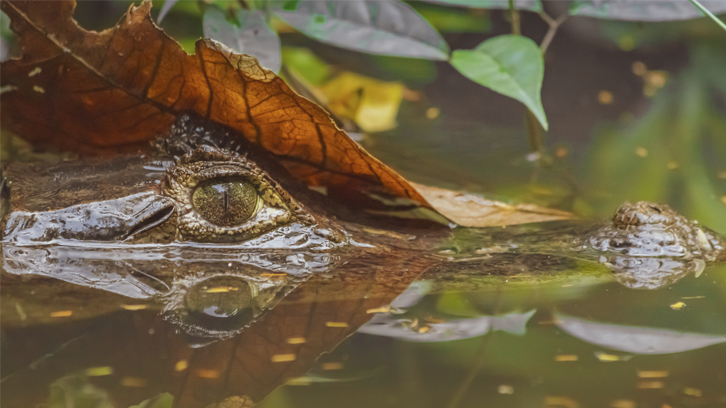Global conservation prioritization areas of crocodilian diversity

A study with the participation of the Department of Animal Biology, Plant Biology and Ecology of the UAB highlights how important crocodiles are in the ecosystems they inhabit and proposes a new conservation protocol that prioritizes the components of functional, phylogenetic and taxonomic diversity in the areas to protect. The research also emphasizes how the protection of crocodilian species will benefit many species that coexist with them.
Twenty-five percent of the world’s crocodilian species still are outside the existing protected areas, according to a new paper published in Scientific Reports. The work highlights the ecological importance of crocodiles and correlates the spatial distribution of species with nutrient retention ecosystem services around the world. The study —in which the expert Felipe S. Campos, from the Department of Animal Biology, Plant Biology and Ecology of the Autonomous University of Barcelona participates as one of the corresponding authors— warns of the critical need for effective conservation efforts on Earth.
Losing natural habitat is the most important threat to the species’ survival. Therefore, selecting the areas to be protected is crucial to design good systematic conservation planning for biodiversity. The conclusions of the study, whose first author is Ricardo Lourenço-de-Moraes (Universidade Federal da Paraíba, Brazil), are based on an innovative protocol of effective conservation measures under three prioritization models for conservation planning of the areas inhabited by endangered species. The article also has the participation of Pedro Cabral (Universidade Nova de Lisboa, Portugal), Thiago Silva‑Soares (Universidade Federal do Espírito Santo, Brazil), Yhuri C. Nobrega (Centro Universitário FAESA, Brazil), Amanda C. Covre (Universidade Estadual de Maringá, Brazil), and Frederico G. R. França (Universidade Federal da Paraíba, Brazil).
The new protocol takes into account the components of functional, phylogenetic, and taxonomic diversity, in relation to their protection capacity. Functional diversity is a dimension that represents the level of differences between species according to morphological, physiological, and ecologic characteristics. Phylogenic diversity adds value to the distinction of species in accordance with their evolutionary processes, and this concept reflects the evolutionary divergence process and time in the Tree of Life. Last, taxonomic diversity represents the number of species assigned to a particular region. In this context, combining indicators on functional, phylogenic, and taxonomic diversity is a methodological tool that helps predict differential effects of competition and environmental filtering in the community assembly.
According to the UAB researcher Felipe S. Campos, the study highlights the global priority areas for crocodilian conservation, using evidence-based planning with multiple biodiversity components. In addition, the authors warn that, by using crocodiles as umbrella species for conservation, many species that coexist with crocodilian species will benefit, apart from a high correspondence among the biodiversity components evaluated.
Department of Animal Biology, Plant Biology and Ecology, Faculty of Biosciences, Universitat Autònoma de Barcelona
References
Lourenço-de-Moraes, R., Campos, F. S., Cabral, P., Silva-Soares, T., Nobrega, Y. C., Covre, A. C., & França, F. G. (2023). Global conservation prioritization areas in three dimensions of crocodilian diversity. Scientific Reports, 13(1), 2568. https://doi.org/10.1038/s41598-023-28413-6


